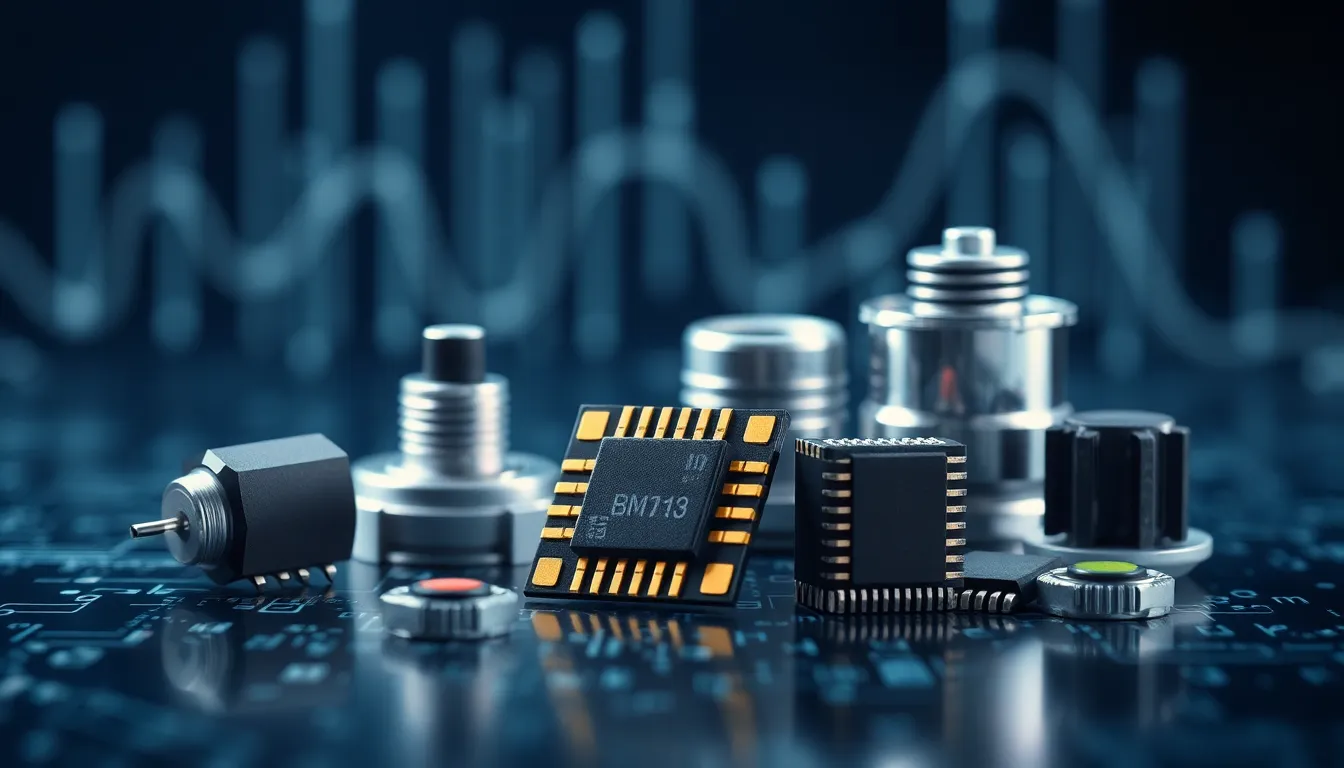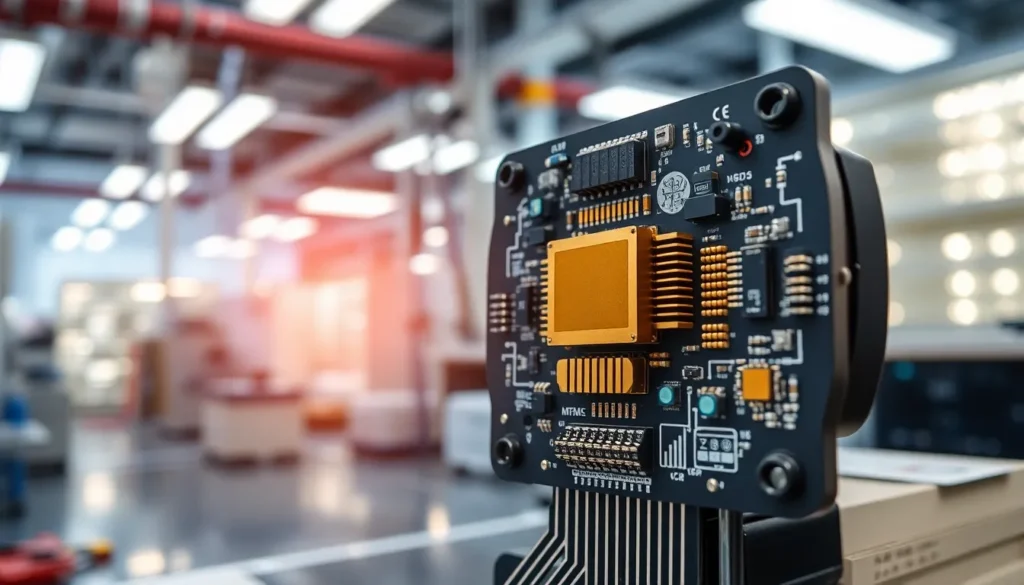In a world where tiny gadgets seem to rule the roost, MEMS technology stands out like a superhero in a sea of sidekicks. These micro-electromechanical systems pack a punch, making everything from smartphones to medical devices smarter and more efficient. Imagine a world where your gadgets could sense, respond, and adapt—all thanks to these miniature marvels.
MEMS Technology
MEMS technology plays a crucial role in modern electronics. It empowers devices to perform complex tasks in compact spaces.
Definition and Principles
MEMS refers to micro-electromechanical systems. These systems integrate mechanical and electrical components at a micro-scale, often below 100 micrometers. Operating principles involve converting electrical signals into mechanical movement. Sensors detect changes in the environment, while actuators respond to these changes, fostering interaction between systems. The technology relies on microfabrication techniques, such as etching and deposition, shaping devices with high precision. MEMS devices function based on principles from physics and engineering, offering reliability and efficiency in diverse applications.
Types of MEMS Devices
MEMS devices cover a wide array of applications. Sensors represent one key type, including accelerometers and gyroscopes that measure motion and orientation. Actuators form another group; examples include micro-mirrors found in optical applications. Pressure sensors also play a significant role, commonly used in automotive and medical applications. Microphones, another type, utilize MEMS technology for enhanced audio capture. Each device contributes uniquely to technological advancements, enhancing performance across consumer electronics, healthcare, and aerospace sectors.
Applications of MEMS Technology

MEMS technology finds widespread use across various sectors, enhancing the functionality of modern devices. These applications demonstrate the versatility and innovation behind MEMS systems.
Consumer Electronics
MEMS technology plays a vital role in consumer electronics. Devices utilize MEMS sensors like accelerometers for motion detection and gyroscopes for orientation. Smartphones can determine their position and orientation by incorporating these sensors, allowing for features like screen rotation and motion-based gaming. Additionally, MEMS microphones enhance audio capture for voice recognition and calls, improving user experience. With the advancement of MEMS technology, manufacturers continuously integrate these components to create smaller, more efficient devices that cater to consumer demands.
Medical Devices
In medical devices, MEMS technology contributes significantly to diagnostics and treatment. Sensors embedded in devices facilitate real-time monitoring of vital signs, such as blood pressure and glucose levels. These compact sensors enhance the accuracy and reliability of health measurements, leading to better patient outcomes. MEMS actuators enable precision in drug delivery systems, allowing for controlled release of medication. The integration of MEMS technology within wearable health devices has revolutionized personal health monitoring, empowering patients to track their health effectively.
Automotive Industry
The automotive industry benefits immensely from MEMS technology. Sensors installed in vehicles monitor critical parameters like accelerations, tire pressure, and braking force. Such data enhances vehicle safety by enabling stability control and collision avoidance systems. MEMS-based pressure sensors communicate tire pressure information to the driver, promoting proactive maintenance. Additionally, MEMS accelerometers assist in deployment of airbags during accidents, ensuring timely response to protect occupants. As vehicles increasingly incorporate smart technologies, MEMS components become essential for improving safety and performance on the road.
Advantages of MEMS Technology
MEMS technology offers distinct benefits that drive innovation in various industries.
Miniaturization
Miniaturization stands as a core advantage of MEMS technology. Systems integrate intricate mechanical and electrical components at a micro-scale, allowing devices to occupy minimal space while maintaining high functionality. Engineers achieve this reduction through advanced fabrication techniques, resulting in lighter and smaller products. Consumer electronics, such as smartphones, increasingly incorporate MEMS sensors like accelerometers and gyroscopes, enhancing features without increasing size. In medical devices, compact MEMS sensors facilitate real-time monitoring of vital signs, crucial for patient care. Space constraints become manageable, enabling seamless integration into devices essential for everyday activities.
Cost-Effectiveness
Cost-effectiveness represents another significant advantage of MEMS technology. Manufacturing processes become simplified due to the use of standard silicon fabrication techniques, reducing production costs. The high level of automation in MEMS fabrication leads to increased efficiency, minimizing labor costs associated with assembly. As a result, designers optimize products for better market prices while ensuring high performance. In automotive applications, for instance, MEMS sensors contribute to advancements in safety systems, which decrease overall vehicle manufacturing expenses without compromising quality. Cost savings extend across various sectors, providing a competitive edge for manufacturers.
Challenges in MEMS Technology
Multiple challenges hinder the advancement and broader adoption of MEMS technology. Addressing these issues is vital for maximizing the potential applications across various industries.
Manufacturing Difficulties
Manufacturing MEMS devices poses significant challenges. Cleanroom environments are essential to prevent contamination, leading to increased costs and complexity. Automated fabrication processes require precise alignment and integration of components, which complicates production. Furthermore, scaling up manufacturing while maintaining quality standards is critical. Many companies face difficulties in achieving consistent yields during the production process, impacting availability and pricing. These manufacturing hurdles can delay product development in the fast-paced tech market.
Material Limitations
Material selection for MEMS devices influences performance and sustainability. Some materials lack the necessary properties for specific applications, limiting functionality. For instance, certain polymers may not withstand high temperatures or stress, leading to device failure. Similarly, the availability of advanced materials can slow down innovation in MEMS design. Researchers continually explore new materials to expand the capabilities of MEMS technology. Compatibility with existing manufacturing processes remains a concern as well, making it crucial to balance performance and feasibility.
Future Trends in MEMS Technology
Future trends indicate significant advancements in MEMS technology, driven by innovation and increasing market demands. Emerging applications in various sectors promise to enhance device capabilities.
Innovations on the Horizon
Innovations in MEMS technology focus on integrating advanced materials and manufacturing processes. Researchers are developing piezoelectric materials that deliver improved energy efficiency for sensors and actuators. Combining MEMS with artificial intelligence enhances data processing capabilities, making devices smarter and more responsive. Flexible and wearable MEMS devices are gaining traction, catering to the growing health and fitness market. Furthermore, advancements in wireless MEMS sensors enable seamless connectivity, supporting the Internet of Things and smart environments.
Market Growth Predictions
Market growth predictions reflect a strong trajectory for MEMS technology. Industry analysts forecast a compound annual growth rate of 10% from 2021 to 2026. Demand for MEMS devices in automotive applications, particularly in safety and automation, significantly contributes to this growth. The healthcare sector drives expansion as MEMS sensors improve patient monitoring and diagnostics. Additionally, consumer electronics will continue to adopt MEMS innovations, enhancing user experiences through advanced functionality and compact designs. Overall, the MEMS market faces immense opportunities, attracting investment and fostering technological evolution.
Conclusion
MEMS technology stands at the forefront of innovation across multiple industries. Its ability to integrate mechanical and electrical components at a micro-scale enables devices to perform complex tasks efficiently. As advancements continue in materials and manufacturing processes, MEMS will play an even more significant role in shaping the future of consumer electronics, healthcare, and automotive sectors.
The growing demand for smarter devices and the rise of the Internet of Things position MEMS technology for substantial growth. By addressing current challenges and leveraging emerging trends, the MEMS market is poised to unlock new opportunities while enhancing the functionality and efficiency of everyday devices.
